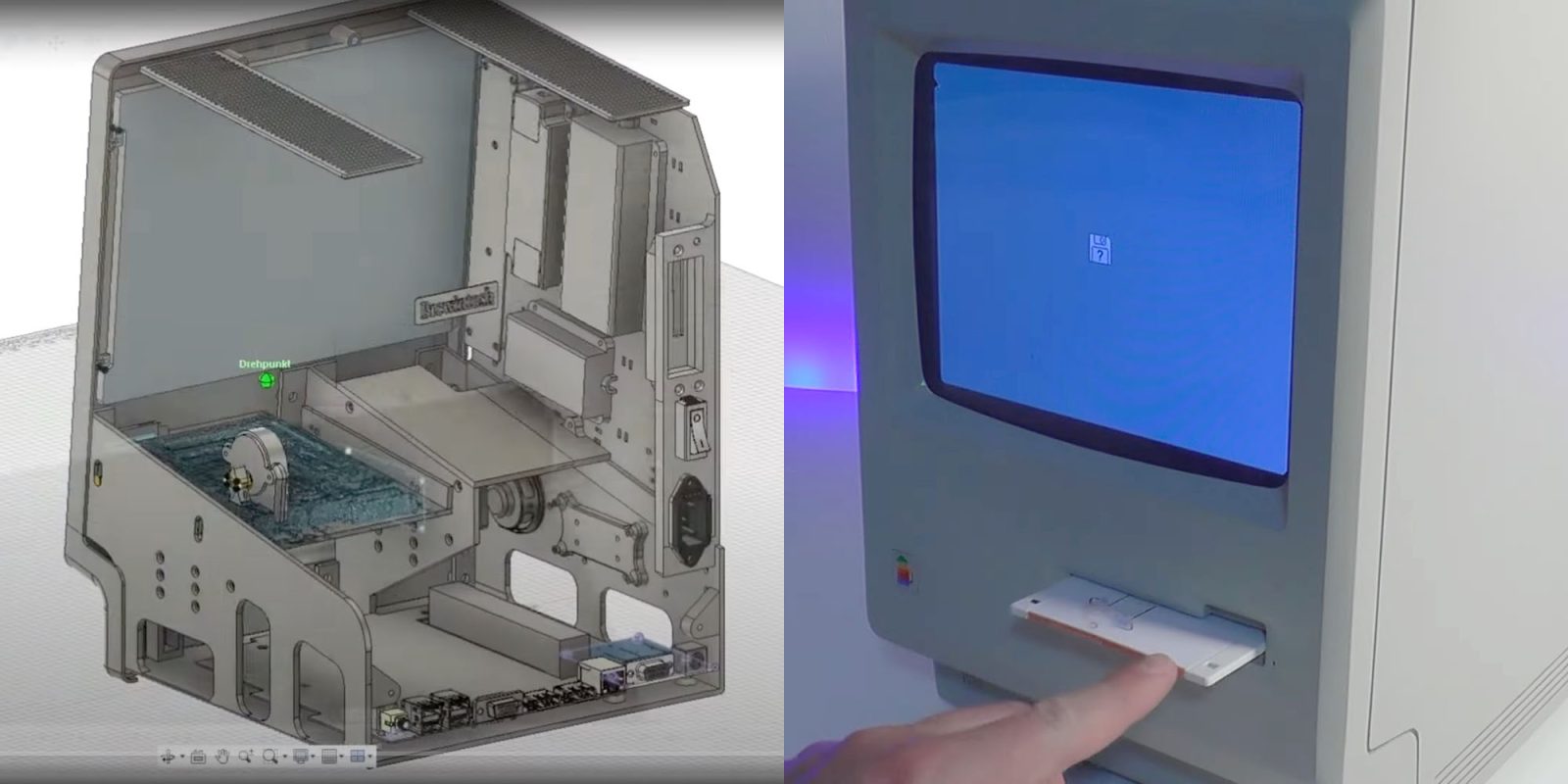
A guy who describes himself as a huge Apple enthusiast and a “designer and tinkerer” has created a painstakingly accurate 3D printed Macintosh Plus.
In what has been described as “Steve Jobs-like attention to detail,” it even boots from (and ejects) a floppy disk, and the monitor remains switched off until the Mac emulator is running and displaying the smiling Mac icon …
ArsTechnica’s Kevin Purdy writes lyrically about his awe and admiration for the project.
Have you ever worked on a hobby project where modifying and compiling the source code for a Linux-based emulator was possibly the easiest and most straightforward part of the whole thing?
Kevin Noki really, really wanted a functioning Macintosh Plus, complete with a functioning, auto-ejecting disk drive that it could boot from […]
Noki, over what he reports as “months,” essentially works backward from 2024, using every kind of maker tool and skill to get back to a working 1986 Mac. Not just “classic Mac OS on a properly sized AliExpress monitor,” mind you. We are talking a properly sized, colored, and textured box, which takes wall power, swallows 3.5-inch disks, works with both telephone-cord and ADB Apple keyboards and mice, has a screen dimmer, and makes the startup sound (the beep, not the chord). It’s not a “loving” tribute; it’s uncanny and potentially unnerving.
Here’s a list of just some of the tasks he had to achieve to pull it off:
- Meticulously measure every single surface and angle of a Macintosh Plus
- Re-create those measurements and model them in AutoDesk Fusion 360
- Print the Mac case in four parts using a modified Ender-3 with gray PLA filament
- Apply one-part plastic filler and sand down the planes where the case pieces would join
- Drill registration holes in the case parts for metal pin connectors
- Use cyanoacrylate (CA) glue to join pieces and repeatedly sand every part with 3D layers showing
- Spray-paint both a primer and final beige color on the outward-facing parts
- Use a vinyl cutter to protect the case parts that should be smooth
- Apply textured clear-coat to replicate the Mac’s rough texture
- Disassemble a 10-inch screen that was a thrift-store find
- Replace the screen’s CCFL with LED lighting
- Rewire and solder a dimmer knob onto the screen to create a dimming control
- De-solder and modify a laptop charging brick to make a power assembly
- Modify a powered USB hub and its AC adapter
- Dye a physical power switch to match its proper case color
- Use WAGO connectors to connect power components safely
- Disassemble a $13 thin client computer and replace its power jack with an XT60
- Wire in a resistor to make that power supply work with an outside adapter
- Replace the thin client’s power button with an Arduino-controlled relay
- Build a front keyboard and mouse connector out of a Teensy USB dev board, RJ11 jack, and TMK keyboard firmware.
- Solder and wire in an internal speaker
- Rebuild a USB floppy drive reader with an Arduino-controlled stepper motor (that you coded) to eject disks from software controls
- Build an ADB peripheral board with a KiCAD design, a Teensy board, and an Arduino Pro Micro
- Configure an ATtiny85 to control mainboard and screen power, and play the startup sound
- Build a modified Mini vMac emulator inside a Linux system
- Design your own Brewintosh raised-text stereotype and apply foil to it with a laminator
- Create custom-designed Brewintosh multicolor stickers, print them, apply UV resin for a glossy finish, and cure them
- Design and print a replica sticker of the original Mac’s back panel
- Record yourself doing all these things and edit them into an engaging video
Check out the video below, and more details of what went into the project over at ArsTechnica.
It follows a post yesterday expressing the view that the era of Hackintoshes is coming to an end.
FTC: We use income earning auto affiliate links. More.




![[CITYPNG.COM]White Google Play PlayStore Logo – 1500×1500](https://startupnews.fyi/wp-content/uploads/2025/08/CITYPNG.COMWhite-Google-Play-PlayStore-Logo-1500x1500-1-630x630.png)